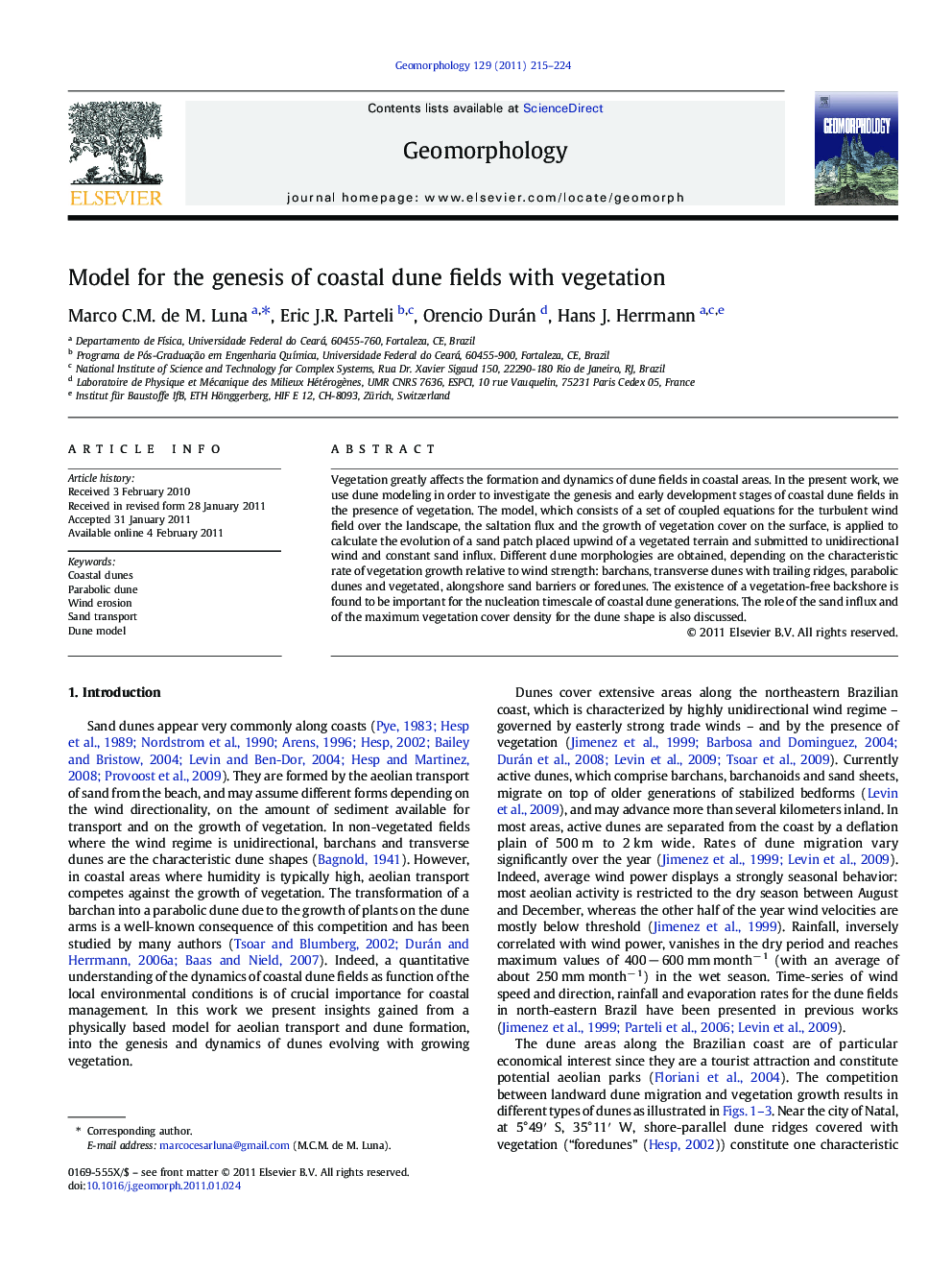| Article ID | Journal | Published Year | Pages | File Type |
|---|---|---|---|---|
| 6433034 | Geomorphology | 2011 | 10 Pages |
Vegetation greatly affects the formation and dynamics of dune fields in coastal areas. In the present work, we use dune modeling in order to investigate the genesis and early development stages of coastal dune fields in the presence of vegetation. The model, which consists of a set of coupled equations for the turbulent wind field over the landscape, the saltation flux and the growth of vegetation cover on the surface, is applied to calculate the evolution of a sand patch placed upwind of a vegetated terrain and submitted to unidirectional wind and constant sand influx. Different dune morphologies are obtained, depending on the characteristic rate of vegetation growth relative to wind strength: barchans, transverse dunes with trailing ridges, parabolic dunes and vegetated, alongshore sand barriers or foredunes. The existence of a vegetation-free backshore is found to be important for the nucleation timescale of coastal dune generations. The role of the sand influx and of the maximum vegetation cover density for the dune shape is also discussed.
Research highlights⺠Vegetation plays a major role for the genesis of coastal dune fields. ⺠The width of the non-vegetated backshore controls interdune spacing. ⺠The maximum vegetation cover density determines the appearance of trailing ridges. ⺠The growth rate of the vegetation controls the barchan-parabolic transition. ⺠Foredunes develop when vegetation grows fast enough.
